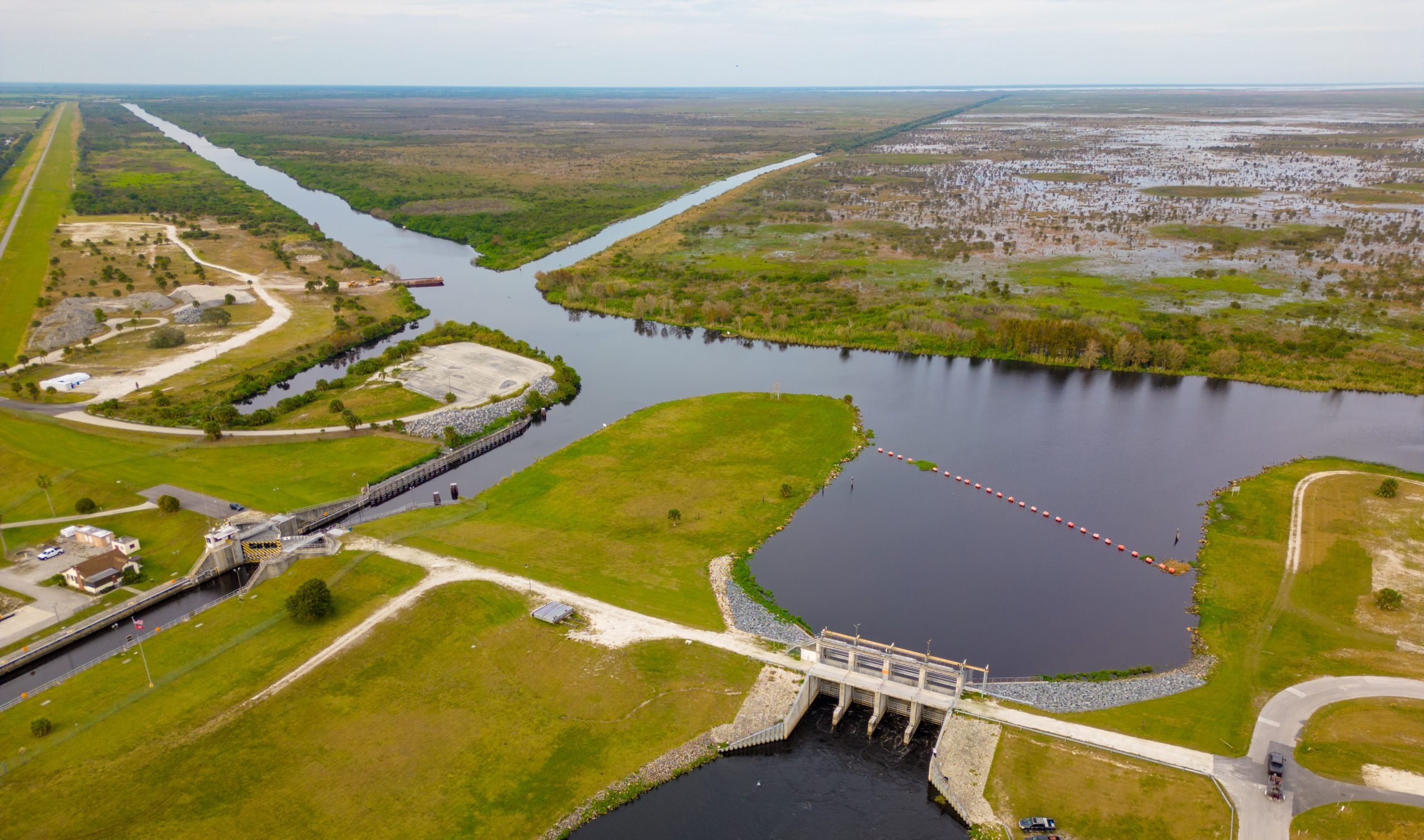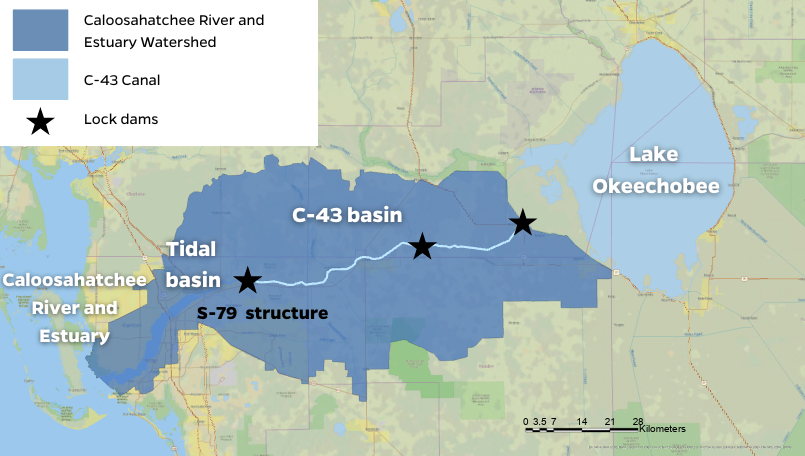A new study examining whether the timing of Lake Okeechobee releases could be adjusted to improve the Caloosahatchee River and Estuary’s (CRE) water quality found that while releases from Lake Okeechobee had an impact on water quality, nutrient concentrations in the CRE were more strongly related to flows from the surrounding C-43 basin.
“This suggests that strategies solely focused on managing the lake’s releases are not enough to significantly improve water quality,” said Lise Montefiore, Ph.D., data scientist at Natrx and lead author. “The main takeaway is that effective pollution reduction can only be achieved by considering the management of both the lake and the surrounding lands.”

Historically, Lake Okeechobee served as the main source of freshwater to the Florida Everglades, but following two catastrophic floods in the 1920s, the U.S. Army Corps of Engineers (USACE) began managing the lake in the 1930s. To prevent flooding, the USACE releases water from the lake to the Caloosahatchee and St. Lucie estuaries when the water levels are too high. However, this can transport water quality problems like harmful algal blooms into the estuaries.
“We wanted to know two things,” said David Kaplan, Ph.D., professor in the University of Florida Department of Environmental Engineering Sciences and associate director of the UF Center for Coastal Solutions. “First, how Lake O and watershed inputs to the CRE have varied over time. Second, if there were better or worse times to release Lake Okeechobee water based on the relationships between flows and nutrient levels.”

Researchers found that the total amount of water discharged from Lake Okeechobee into the CRE has increased since the 1970s. Currently, the CRE receives roughly equal amounts of water from the lake and watershed over the year. During the dry season from October through May, the lake is the main source of water flow to the CRE. From June through September, or during the wet season, the watershed is the main source.
Analyses of flows and nutrient levels showed that nitrogen concentrations varied with the season and source of water, while phosphorus concentrations did not. Changes to the timing of water releases from Lake Okeechobee could mitigate consequences of nitrogen loading but would likely not affect downstream phosphorus concentrations. These findings suggest that releases could be scheduled during March through May, or September through November, to mitigate downstream concentrations of ammonia and nitrates, respectively.

Unfortunately, these windows of time for suggested releases are small and do not overlap, underlining the complexity of water management scheduling. Prior research demonstrates a connection between high nitrogen concentrations and red tide blooms, so a decrease in nitrogen delivery from Lake Okeechobee could conceivably mitigate severe red tides in the Caloosahatchee River Estuary.
“Lake Okeechobee’s water quality problems are understandably a concern to those who live in Central and South Florida, as is the potential for its water quality challenges to be exported to treasured downstream estuaries,” said Natalie Nelson, Ph.D., associate professor at the North Carolina State University Biological and Agricultural Engineering Department. “While Lake Okeechobee has an effect on nutrient concentrations in the estuary, the C-43 watershed has a greater effect, meaning that restoration actions in the watershed may lead to greater prevention of elevated nutrient concentrations in the Caloosahatchee than modifying the way Lake Okeechobee is managed. Having data-informed insights on the primary drivers of water quality impacts is key to developing the right solutions.”